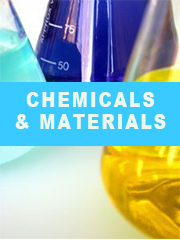Report overview
Clean drinking water is conidered to be one of the implicit requirement for a healthy human population. However, the increase industrialization and rising use of chemicals has created a burden of unwanted pollutants in the drinking water. Therefore, several effective purifying technologies are developed to maintain the quality of water. Amonsgt these, an immensely beneficial procedure is used for purification of water with the help of 'adsorbents'. Adsorbents are obtained from alumina, zeolite, carbon, clay minerals, industrial by products, and natural products such as parts of the plants and others.
This report aims to provide a comprehensive presentation of the global market for Drinking Water Adsorbents, with both quantitative and qualitative analysis, to help readers develop business/growth strategies, assess the market competitive situation, analyze their position in the current marketplace, and make informed business decisions regarding Drinking Water Adsorbents. This report contains market size and forecasts of Drinking Water Adsorbents in global, including the following market information:
Global Drinking Water Adsorbents Market Revenue, 2018-2023, 2024-2035, ($ millions)
Global Drinking Water Adsorbents Market Sales, 2018-2023, 2024-2035, (Kiloton)
Global top five Drinking Water Adsorbents companies in 2022 (%)
The global Drinking Water Adsorbents market was valued at US$ million in 2022 and is projected to reach US$ million by 2035, at a CAGR of % during the forecast period. The influence of COVID-19 and the Russia-Ukraine War were considered while estimating market sizes.
The U.S. Market is Estimated at $ Million in 2022, While China is Forecast to Reach $ Million.
Zeolite Segment to Reach $ Million by 2035, with a % CAGR in next six years.
The global key manufacturers of Drinking Water Adsorbents include BASF SE, CycloPure, Dupont, Evoqua Water Technologies, GEH Wasserchemie, KMI Zeolite, Kuraray, Lenntech B.V. and Purolite, etc. in 2022, the global top five players have a share approximately % in terms of revenue.
We surveyed the Drinking Water Adsorbents manufacturers, suppliers, distributors and industry experts on this industry, involving the sales, revenue, demand, price change, product type, recent development and plan, industry trends, drivers, challenges, obstacles, and potential risks.
Total Market by Segment:
Global Drinking Water Adsorbents Market, by Type, 2018-2023, 2024-2035 ($ Millions) & (Kiloton)
Global Drinking Water Adsorbents Market Segment Percentages, by Type, 2022 (%)
Zeolite
Clay
Alumina
Activated Carbon
Manganese Oxide
Cellulose
Others
Global Drinking Water Adsorbents Market, by Application, 2018-2023, 2024-2035 ($ Millions) & (Kiloton)
Global Drinking Water Adsorbents Market Segment Percentages, by Application, 2022 (%)
Industrial Use
Consumer Use
Others
Global Drinking Water Adsorbents Market, By Region and Country, 2018-2023, 2024-2035 ($ Millions) & (Kiloton)
Global Drinking Water Adsorbents Market Segment Percentages, By Region and Country, 2022 (%)
North America
US
Canada
Mexico
Europe
Germany
France
U.K.
Italy
Russia
Nordic Countries
Benelux
Rest of Europe
Asia
China
Japan
South Korea
Southeast Asia
India
Rest of Asia
South America
Brazil
Argentina
Rest of South America
Middle East & Africa
Turkey
Israel
Saudi Arabia
UAE
Rest of Middle East & Africa
Competitor Analysis
The report also provides analysis of leading market participants including:
Key companies Drinking Water Adsorbents revenues in global market, 2018-2023 (Estimated), ($ millions)
Key companies Drinking Water Adsorbents revenues share in global market, 2022 (%)
Key companies Drinking Water Adsorbents sales in global market, 2018-2023 (Estimated), (Kiloton)
Key companies Drinking Water Adsorbents sales share in global market, 2022 (%)
Further, the report presents profiles of competitors in the market, key players include:
BASF SE
CycloPure
Dupont
Evoqua Water Technologies
GEH Wasserchemie
KMI Zeolite
Kuraray
Lenntech B.V.
Purolite
TIGG LLC
Outline of Major Chapters:
Chapter 1: Introduces the definition of Drinking Water Adsorbents, market overview.
Chapter 2: Global Drinking Water Adsorbents market size in revenue and volume.
Chapter 3: Detailed analysis of Drinking Water Adsorbents manufacturers competitive landscape, price, sales and revenue market share, latest development plan, merger, and acquisition information, etc.
Chapter 4: Provides the analysis of various market segments by type, covering the market size and development potential of each market segment, to help readers find the blue ocean market in different market segments.
Chapter 5: Provides the analysis of various market segments by application, covering the market size and development potential of each market segment, to help readers find the blue ocean market in different downstream markets.
Chapter 6: Sales of Drinking Water Adsorbents in regional level and country level. It provides a quantitative analysis of the market size and development potential of each region and its main countries and introduces the market development, future development prospects, market space of each country in the world.
Chapter 7: Provides profiles of key players, introducing the basic situation of the main companies in the market in detail, including product sales, revenue, price, gross margin, product introduction, recent development, etc.
Chapter 8: Global Drinking Water Adsorbents capacity by region & country.
Chapter 9: Introduces the market dynamics, latest developments of the market, the driving factors and restrictive factors of the market, the challenges and risks faced by manufacturers in the industry, and the analysis of relevant policies in the industry.
Chapter 10: Analysis of industrial chain, including the upstream and downstream of the industry.
Chapter 11: The main points and conclusions of the report.
